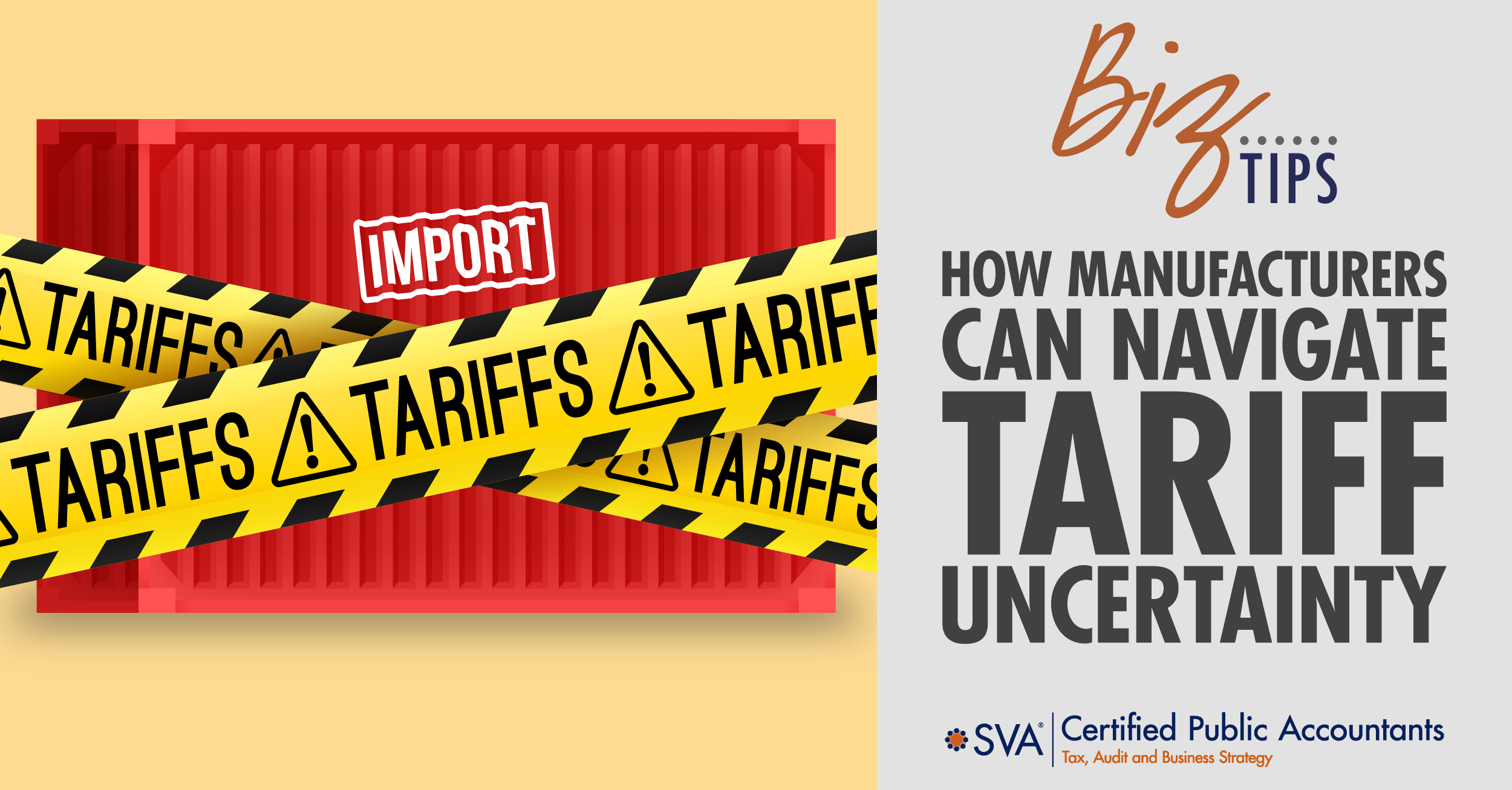Lately, there’s been a lot of talk about tariffs, and for good reason. Tariff policies seem to change almost daily, creating uncertainty for manufacturers who rely on global supply chains. While we can’t predict exactly what will happen next, manufacturers can take steps to prepare for potential disruptions and protect their bottom lines.
Understanding the Impact of Tariffs
If your business sources materials or finished products from overseas, tariffs could directly impact your cost structure. When tariffs are enacted, the cost isn’t absorbed by the country imposing them. It ultimately falls on businesses and consumers.
If you’re importing goods, you must either absorb the additional cost or pass it along to your customers. The same applies if you’re exporting goods to countries that impose retaliatory tariffs on U.S. products.
For manufacturers producing everything domestically, the direct impact may be minimal. However, tariff-related price increases on raw materials like steel, aluminum, or electronics components can still affect operations. Even if you don’t source internationally, your suppliers might, leading to increased costs that trickle down to your business.
(Download Video Transcript)
7 Steps to Prepare for Tariffs
While the landscape is unpredictable, there are practical steps manufacturers can take to mitigate risk and stay ahead of potential tariff challenges:
| 1. Assess Your Exposure |
| Start by evaluating whether your supply chain is vulnerable to tariffs. Identify the origins of your raw materials, components, and finished products. If a significant portion comes from tariff-affected regions, calculate the potential cost impact on your business. |
| 2. Review Pricing Strategies |
| Once you understand your exposure, decide how you will handle increased costs. Will you absorb them, pass them to customers, or find a balance between the two? Conduct pricing scenario analyses to determine how different tariff levels will affect your profit margins. |
| 3. Explore Alternative Suppliers |
| Diversifying your supply chain can help you reduce risk. Look into domestic suppliers or manufacturers in countries that are not subject to tariffs. While shifting suppliers can be a complex process, having contingency plans in place ensures you’re not caught off guard if tariffs increase suddenly. |
| 4. Monitor Policy Changes Closely |
| Tariffs are political tools, meaning policies can shift rapidly. Stay informed by tracking updates from trade organizations, government agencies, and industry associations. Engaging with business groups like the National Association of Manufacturers or local commerce chambers can help you stay ahead of changes. |
| 5. Negotiate with Suppliers and Customers |
| If tariffs are raising costs, discuss options with your suppliers. Some may be willing to share the burden by offering discounts or adjusting terms. On the customer side, communicate transparently about price adjustments due to tariffs and explore ways to add value without significantly increasing prices. |
| 6. Optimize Inventory Management |
| If you anticipate tariff hikes, consider increasing your inventory of affected goods before new rates take effect. However, balance this strategy with the risks of holding excess inventory, such as storage costs and potential product obsolescence. |
| 7. Consider Tariff Exemptions |
| Certain industries and products may qualify for tariff exemptions or refunds. Research whether your business can apply for exclusions and consult with trade advisors or legal professionals to explore your options. |
Making Strategic Decisions
Ultimately, manufacturers must make informed choices based on their unique circumstances. If passing costs to customers is feasible, it may help maintain profitability. If not, adjusting operations, renegotiating supplier contracts, or optimizing production efficiency may be necessary.
The key takeaway? While tariffs create uncertainty, preparation and proactive planning can help manufacturers weather the storm. By staying informed and adaptable, businesses can navigate tariff challenges while positioning themselves for long-term success.
© 2025 SVA Certified Public Accountants

